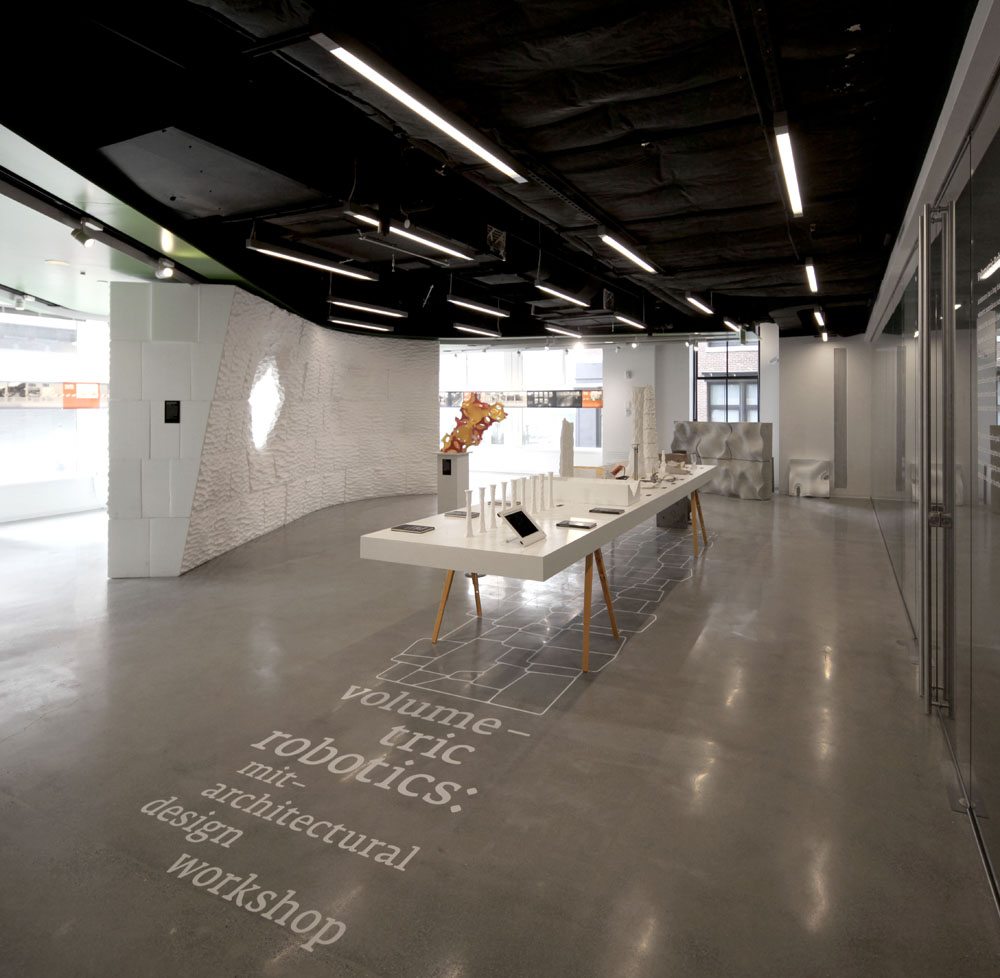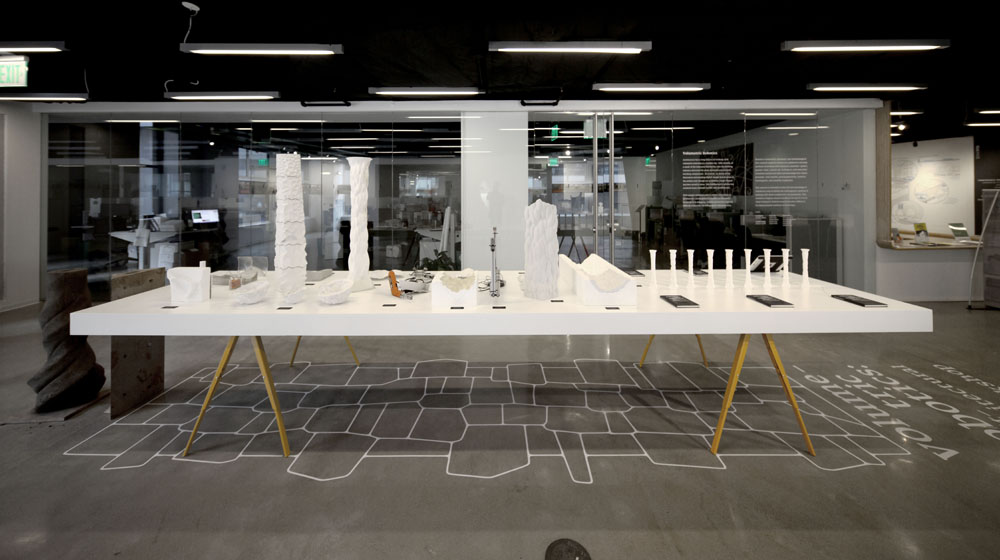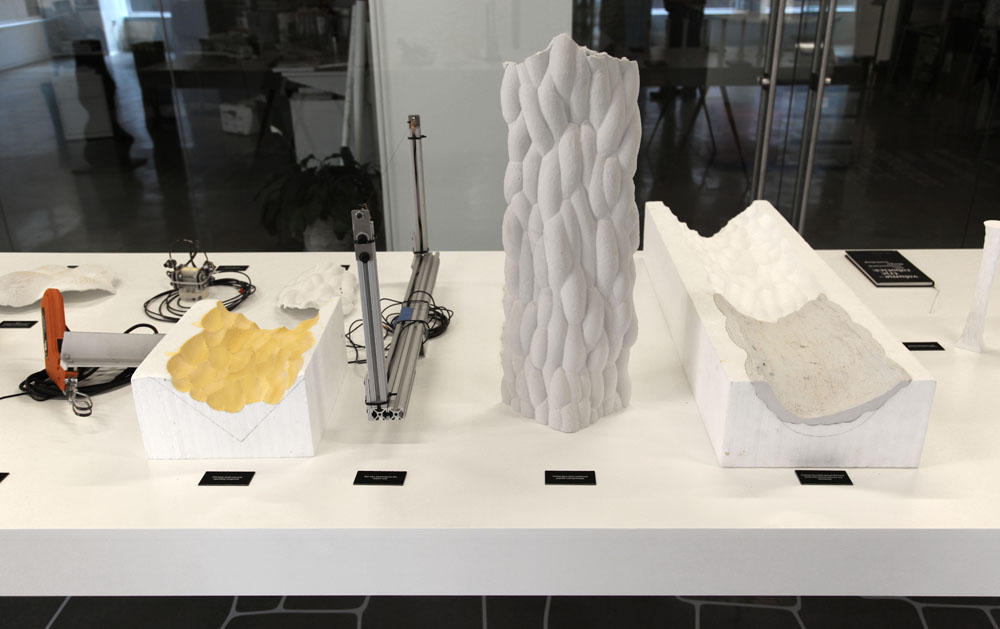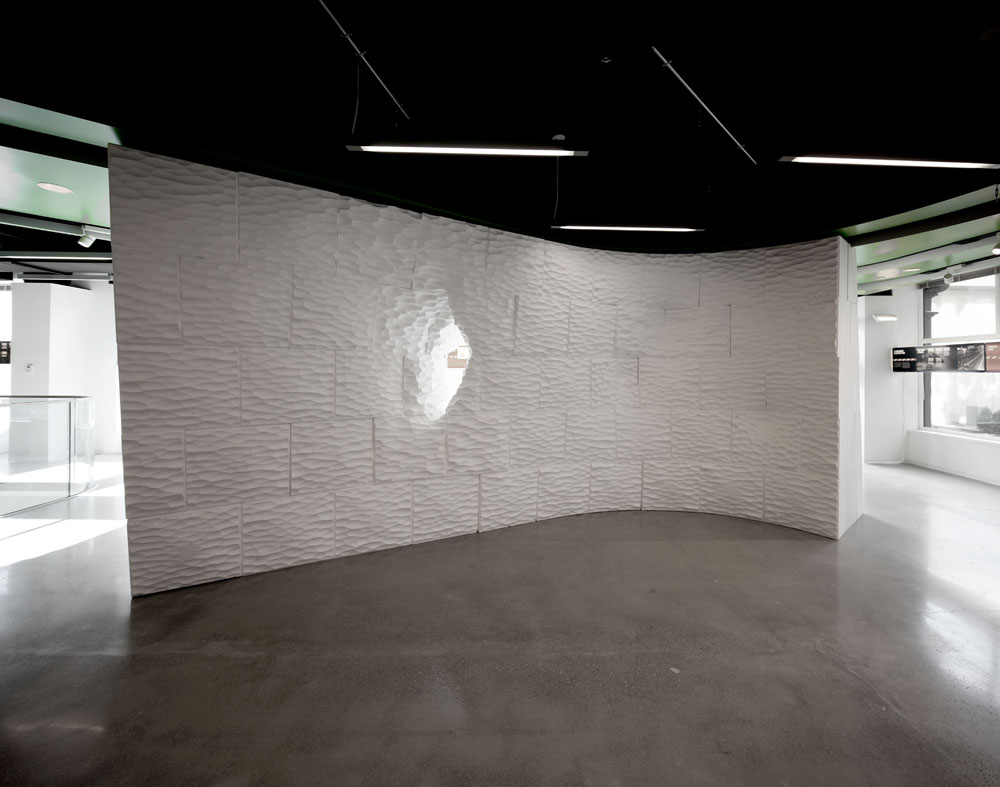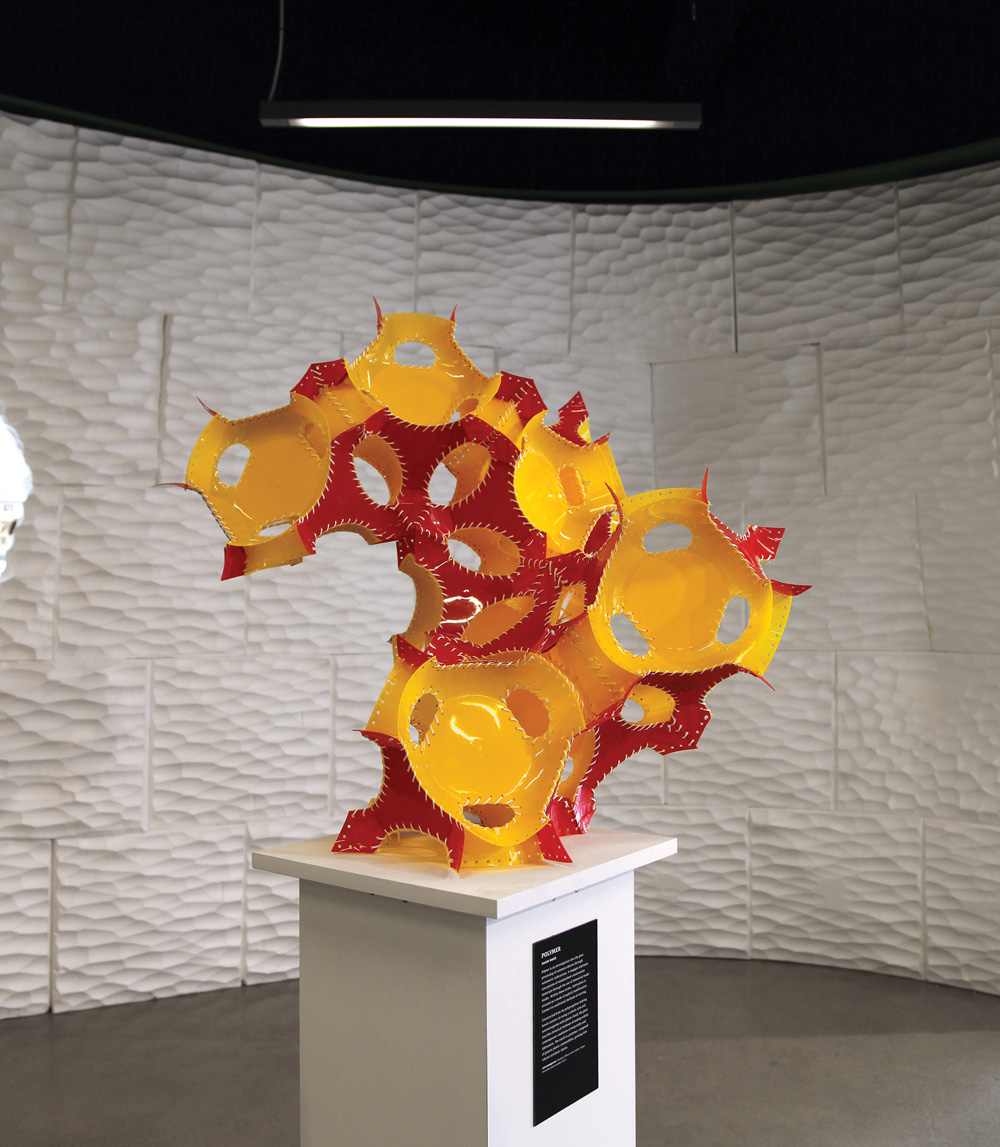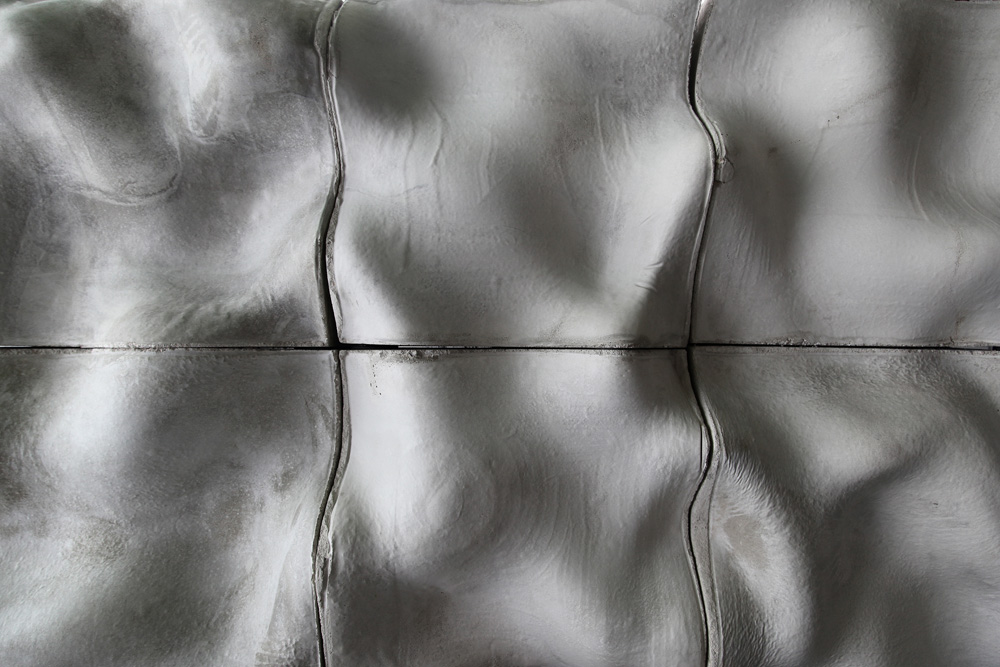Volumetric Robotics: MIT Architectural Design Workshop is on exhibit at the BSA Space through late May. This exhibition displays the work during a semester long workshop at MIT as well as three large scale artifacts and a publication of the papers produced during the workshop.
Hyperbody Workshop on Robotic Fabrication
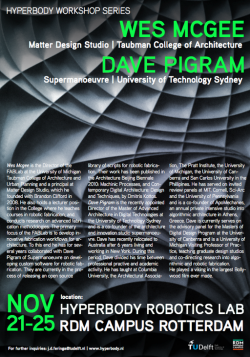 Wes McGee to teach a workshop with Dave Pigram on Robotic Fabrication as part of the Hyperbody Workshop Series at TU Delft.
The workshop with Wes McGee [ matter design studio / Taubmann College of Architecture ] and Dave Pigram [ supermanouvre / university of technology sydney] explores the idea of funicular structures coupled with the robotic hotwire cutting process. Hotwire cutting is a highly effective and relatively novel approach to the production of volume and is highly effective in the production of volumetric elements of EPS foam. The workshop explores the potential of EPS formwork while revisiting the idea of half-timber structures. Part of the formwork will be come structural, part of it remains within the structure, part of the formwork will be disposed off / recycled.
Wes McGee to teach a workshop with Dave Pigram on Robotic Fabrication as part of the Hyperbody Workshop Series at TU Delft.
The workshop with Wes McGee [ matter design studio / Taubmann College of Architecture ] and Dave Pigram [ supermanouvre / university of technology sydney] explores the idea of funicular structures coupled with the robotic hotwire cutting process. Hotwire cutting is a highly effective and relatively novel approach to the production of volume and is highly effective in the production of volumetric elements of EPS foam. The workshop explores the potential of EPS formwork while revisiting the idea of half-timber structures. Part of the formwork will be come structural, part of it remains within the structure, part of the formwork will be disposed off / recycled.
The workshop is open to a limited number of external students at a reasonable fee of €150, including workshop materials.
Large Format Additive Fabrication
As part of the Fall 2009 Robotic Fabrication course, students challenged the traditional limitations of the 3d printing process. One big limitation is the scale/cost ratio. Several researchers have proposed building-sized fabrication machines, but all rely on massive gantry-type machines….massive in cost and limited in mobility.
This project seeks to propose the process not just for full scale modeling, but instead for the full scale fabrication of actual building components. The process is a hybrid between additive and subtractive techniques to create a net-shape building component. This part can then be coated as well as filled internally to provide structure and surface rigidity. Precedents include the typical ICF concrete forms as well as the foam core composites used in high end structures requiring double curvature. Even if used simply as a mold production process, the material savings occurs from eliminating a majority of the waste created in a purely subtractive process such as milling EPS foam blocks for molds. The ability to extrude a tooling paste over the surface has already been proven in the aerospace and wind turbine fabrication industries.
Certainly the topological freedom of 3d printing has already been proven, but not at the building scale. Integrated electrical and mechanical passages are just one possibility. The capability to create limited overhang without a supporting scaffold is also a major advantage, requiring the ability to angle the extrusion nozzle. Future research includes the application of GFRC/P (glass fiber reinforced concrete or polymer) coatings as well as back-filling structural reinforcement into the voids created.
Student credits Lead: Kris Walters Team:Les Key, Jae Ryong Oh, Jonathan Puff, Dan Weissman

